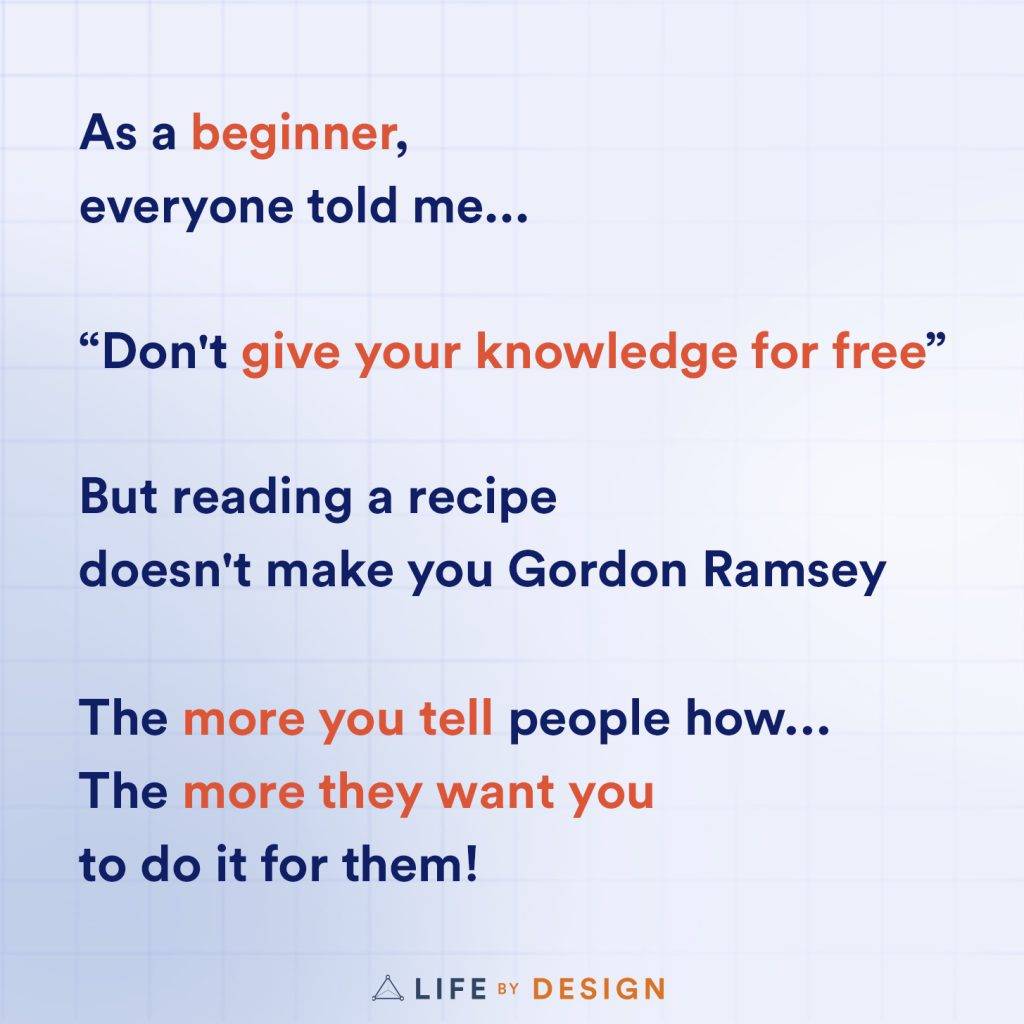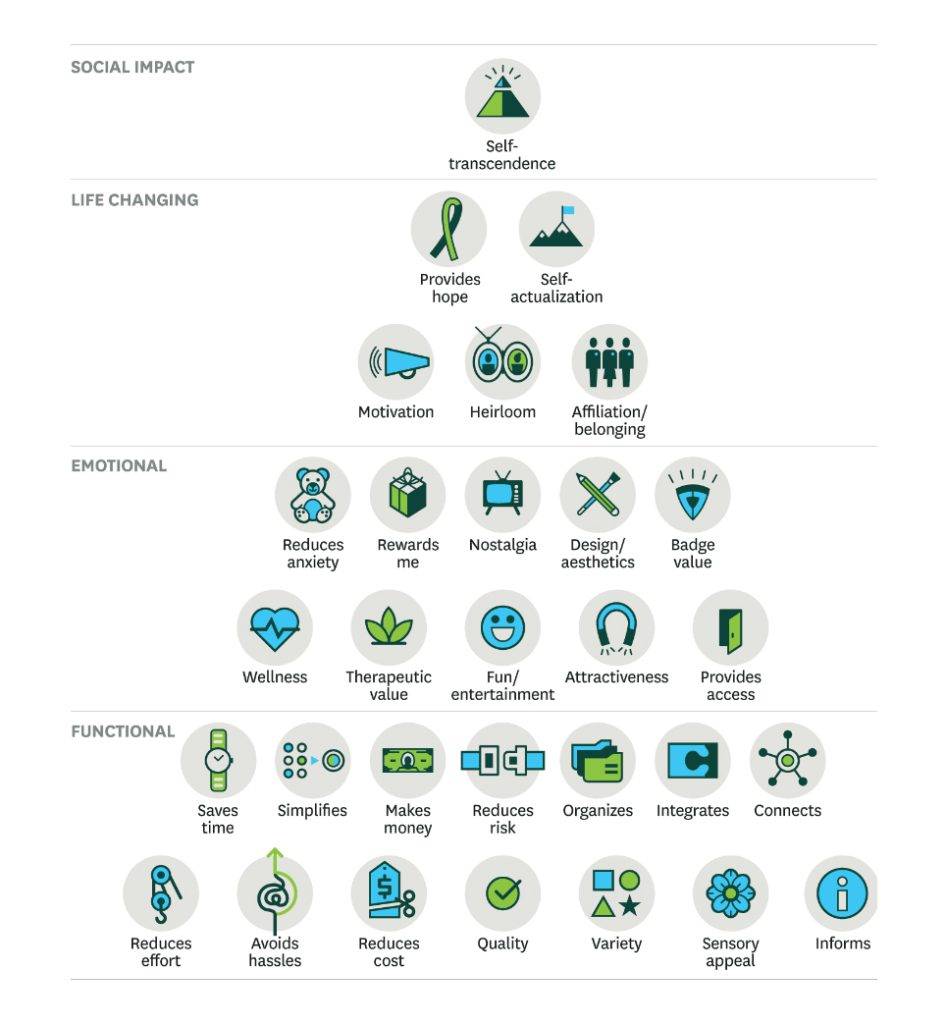
Jan 16 2025
- Money, Sales
In terms of SEO pricing and structures, everyone has their own approach. Personally, I’ve worked with SEOs who charge varying rates and have different structures.
Generally, I prefer to charge a flat monthly fee. It’s the simplest way for clients to understand. Introducing one-off costs and hourly rates can confuse clients and lead to constant back-and-forth discussions.
I typically set a fixed monthly budget. In the first month, I focus on on-page optimizations. From the second month onward, I concentrate on link building. However, I do let clients know that some of their budget may go towards on-page adjustments throughout the ongoing process.
It’s crucial to communicate to clients that SEO is a long-term strategy:
It’s not a quick fix or something where budgets can fluctuate monthly based on their bank balance.
I usually require a minimum three-month commitment.
This helps manage expectations since many clients might expect results immediately and may not understand that the work takes time to produce results.
While you can’t enforce contracts strictly, having this structure provides a foundation for your work.
I usually charge a flat monthly fee via direct debit, with an invoice sent out each month.
Clients also receive a monthly report via Loom.
I track keywords and their domain authority, which are good indicators of performance.
Remember, traffic can vary due to seasons, weather, and personal preferences, so traffic isn’t a reliable indicator of performance.
SEO pricing and rates can vary widely. You’ll find both cheap and expensive rates, and professional SEO consultants who get results can charge £500/hr.
Your comfort level in charging will depend on your experience.
If you’re new and lack confidence in your results, it’s reasonable to charge less.
Many gurus advise doubling your rates, but if you’re still learning, it’s better to charge what feels right until you build confidence in delivering results.
For example, I’ve reached a point where I can confidently charge £££ if I believe I can generate significant leads for a client.
If you’re still learning, treat it as a paid learning opportunity and charge less.
My minimum fee for SEO services starts at £800 a month.
This is for basic packages, including some on-page tweaks and ongoing link building.
Lower budgets, like £200 or £300 a month, often attract clients who lack the long-term mindset needed for SEO.
They tend to quit after a short period and may request refunds, so I avoid those lower-budget projects.
However, if this is your first project with someone you know and trust, it might be fine to negotiate a lower rate.
When budgeting, consider your time and expertise.
The insights you provide can significantly impact a client’s strategy.
For instance, if a client is spending £2,000 on Linkbuilding without guidance, they might not achieve good results.
However, spending just 10 minutes analyzing their keywords can deliver £100’s of value,
So your rate for strategy can be in the hundreds of £ per hour.
Whilst lower value activities like actually implementing the onpage changes you’ve suggested may be charged lower.
For link building, consistency is key.
You can source links from various platforms like Fat Joe or Fiverr,
or link from your own personal network of sites.
Determine your link costs and add a markup for administration and profit.
If you’re unsure about a client’s potential, consider charging a one-time fee for necessary on-page work before starting link building.
The main thing is to communicate clearly with your clients about what you’re doing and why.
Transparency is essential, especially when results may not show immediately
Regular check-ins and updates—bi-weekly, for example—can help maintain client trust.
Explain any lack of movement in rankings and discuss what to expect moving forward.
Ultimately, for SEO, a client’s satisfaction with your communication and the work being done often matters more than immediate results.
Estimate the potential ROI based on keyword rankings, traffic, and conversion rates.
If you’re struggling to figure out your pricing as a freelancer, assess
For instance, if you can rank position 1-3 for a keyword with 1,000 monthly searches,
you could get 10% of that traffic.
If the website converts 10% of that traffic into paying customers,
then you could get the client an estimated 10 monthly customers every month.
If a customer is worth £1000 over a year, then you’ve just made them £10,000/yr
This is all just very rough estimates,
But you can use these numbers to demonstrate return on investment.

Good question. It’s a complex topic.
It spans pricing freelance services, and more abstract notions of self-esteem
I usually use value-based pricing.
So it depends on what the customer is getting back from the interaction
Vs what I have to do to fulfil the promise.
In my design agency it’s easier as you are offering services that make people money.
So I can price based on how much money they can make from my help.
It’s usually easy to do some napkin sketch math on this depending on the services or products they sell and the number of customers they have vs the no of customers they will get.
This can be a lot or a little, depending on the business.
In LBD it can be trickier.
A lot of coaches just teach stuff to help you make more money.
But my whole programme is about realising that money means little after a certain point,
And helping people to build the kind of lifestyle that they want,
And organising their business around freedom first.
So the stuff I teach has benefits which I feel are more valuable than just money,
But are intangible and harder to define.
Things like
Different people place different value on different things.
Phase 1 is about lifestyle design for freelancers. It’s about designing the ideal lifestyle for that person, and reverse engineering it into actions they can take daily, and providing them with systems for consistency to make sure they take those actions whilst avoiding overwhelm..
Intangible stuff. But this is the foundation growth (both personal and business) is built on.
Phase 2 is stability. This part of programme deals directly with helping freelancers increase their profit, for a safety cushion and stable income,
So if in doubt I can relate the value of my services back to how many clients they will gain, how much more money the can get by increasing their prices
Phase 3 is about freedom. systems to help freelancers automate the fundamentals of their business so they can spend their time working ON the business, and get back their valuable freedom.
The end result is a scalable lifestyle business built around an intentional life.
Which I think is pretty valuable.
Everyone will do these mental calculations in their head when they meet you.
The calculation is a balance of the result, your authority, your trustworthiness, what people are willing to pay for that result.
In the end,
Your price is how much OTHER people think you’re worth 🤣
Your worth is how much YOU think you’re worth.
Your value is how much your product pays off.
For myself, I try to tie my worth based on people I’ve helped and what they say about how I’ve helped them,
Not how much money I make.
I fear a lot of people never disconnect income vs self-worth
If you can start judging your worth for yourself, instead of what others think.
It makes your self-esteem more sustainable.

I prepared an email for long-term clients that we’ve talked about.
Going to be honest, it took me almost 2 hours to figure and calculate everything out, haha.
Oh man, that’s too much time! I totally get how long drafting boundary setting emails to clients takes. If I have a tough client sometimes it can take me like an hour to draft something careful, so I try to use timeboxing it to constrain the time!
I’ve made some edits to your email, as I’m looking at it from the outside, I hope you take this as constructive feedback and discard what you don’t feel comfortable with.
Hi XXXX,
It’s YYYYY
We’ve been working together for 2 years, I’m so grateful for the opportunity to work with the whole team,
I feel we’ve now reached the point where I intuitively know and understand your needs for YYYYWhich saves a lot of back and forth on briefs and admin etc.
Over the last 2 years my client roster has grown,
I’ve picked up new skills,
but many of my favourite long-term clients are still on outdated legacy rates.
I’m going to be moving away from Upwork, to focus on growing my motion design agency.
I plan to continue improving my output to be better than ever, and even offer more services in future.This means I will be transitioning to retainer packages,
So I’m reaching out to my favourite long-term clients,
To see if you are interested in continuing to work with me.The way we work together day to day won’t change,
But working on a retainer will mean I spend less time on admin,
So I can spend more time on delivering even better results and value for you.My new retainer package is going to be a super simple packaged service which includes….
✅ X of explainers
✅ X no of revisions per project
✅ 24hr response time
🎁 Brand new seamless comms system
🎁 Stress-free project management on ClickupAs a solo agency owner, the number of clients in my roster will be limited to X in 2024.
I am reaching out to existing clients first to offer this package at the flat rate of £X/m, as I would love to keep working with you.I realise this is a change from our current working patterns,
And I really hope we can continue working together under my new package.
Just let me know if you have any questions,Otherwise can we schedule a call to discuss setting up our new agreement? 🙂🙂🙂
Kind regards, YYY


The best way to do it is by asking some probing questions. If you’re doing sales calls the right way, this is the perfect time to do it.
This is why sales calls are so important because you’re gathering data. You’re establishing your authority and you’re selling all on a sales call.
I just need to jump into a call, scope out your project, and figure out where they’re a good fit.
If you’re selling digital marketing services, it’s pretty easy because you can ask them what’s their revenue what’s their digital marketing budget If you can’t do that, you have to ask things like,
where do you picture this business in three years?
How many customers do you have a month?
What are the customers worth to you?
In terms of the rule of thumb, have in your head the minimum amount that you want to charge as a freelancer. Make it a number that you’re comfortable with but always have a minimum rate of what you want for that project.
Usually what I do during the sales calls is to preempt that objection This kind of comes back to authority and operating from a position of surplus but that’s why we do these things.
I’m not the cheapest, but I do provide the best value.
If you want to work with me, it might be expensive, but here’s the results we provide.
Show them and obviously, you’ve got to deliver those results.
Value-based pricing only works if you’re delivering value. That’s why value-based pricing always beats hourly pricing.




IF you’re running a lifestyle business as a solopreneur you only have a certain number of hours in a day.
And if you are working on an hourly based pricing, there’s a very low ceiling to how much money you can make in the number of hours of the day you have.
You can only put your hourly rate up so much.
Or work more hours is the other option, which no one wants to do.
So really, I would encourage you to move to what’s called value-based pricing.
This means you work out your prices based on the value that you deliver, instead of the hours you work on it,
which means that your price is different depending on every client.


You only have a certain number of hours in a day.
And if you are working on an hourly based pricing,
there’s a very low ceiling to how much money you can make in the number of hours of the day you have.
You can only put your hourly rate up so much or working more hours is the other option,
which no one wants to do.
So really I would encourage you to move to what’s called ‘value-based pricing‘.
So if they make more money from that website, you’re providing more value to that customer.
So why would you not charge more?
So that’s where value-based pricing comes in.
Obviously, every service is different, but basically, you need to be working out a way to charge by the value that you’re offering that customer.
The best way to do this is by packaging your services into an offer that sells.

My basic rule of thumb is:
Will the client make money from it, or save time from it?
Then charge for it.
But l’d also say you have to balance pricing as a freelancer. If it’s something that takes you little extra time, but adds value for your clients, consider throwing it in.
But as a bonus!
Make sure they know what it would normally cost.
I see a lot of freelancers going the extra mile, And no-one even knows how big a deal it is.
It’s likely this “little thing” actually took you years to learn.
There is one situation in which I always give away free knowledge…


If you want to offer a high ticket service and charge more than your competition you have to get used to giving away the kind of value for free that others are charging for…
During your sales calls you should be giving out free advice and quick wins to demonstrate your value.
As a beginner everyone told me “don’t give away your knowledge for free”.
But reading a receipe doesn’t make you Gordon Ramsey.
The more you tell people “how”, the more they want you to do it for them.


Figuring out how much to charge as a freelancer is always tricky!
Pricing formula
As a rule of thumb do a rough calculation of how long you think each stage of the project will take then add 20% for safety and another 15% for admin and communication.
There isn’t a formula sometimes you have to know how much the project will cost you so you aren’t operating at a loss, then throw a price at it
If you have a well defined offer:
1/4 or 1/3rd value of promise
If you haven’t done it before.
My policy is if you have less experience, treat it as being paid to learn and go cheaper.
Don’t try to charge high ticket prices if you aren’t confident of the results.
Long term relationships are more important than a quick buck.
Pricing Risks
The honest answer is if you’re doing a project which involves something you haven’t done before it’s a risk.
You have to make a best guess.
Sometimes you’re going to lose because it took more than you thought to provide a result.
But now you know how to do it next time.
Your estimates will get a lot more accurate to the point where when someone approaches you with a problem you know how to solve it and you know how long it’ll take to solve it. with more and more experience it’ll get easier to provide an accurate calculation.
Here’s my guide to pricing freelance services

We are all just a bunch of hairless apes hurtling through space-time on a ball of mud.
Everyone seeks validation, love, status.
The difference between you and a millionaire is that a millionaire has more money
July 25, 2025What misconceptions about money do you hold that are holding you back?
If you want to make a little bit of money,
sell things people want.
If you want to make a lot of money,
stop selling things and start selling transformations that make people feel things.
If you want to make the most money,
But actually help people too,
Sell knowledge to help people change their life.
The market is full of creators producing and selling valuable products.
But over production isn’t the problem, over consumption is the problem.
After WW2 between leading physcologists and governments to design culture in favour of consumerism consciously.
They utilized newfound propaganda techniques which are now known as “public relations”.
The goal was well-meaning:
To protect a newly liberated workforce from mass joblessness.
But the long-term effect was rampant consumerism and zero-sum thinking.
The net effect of this social engineering is that…
Our culture says a good citizen is someone working to earn money to buy things we don’t need.
Culture says success looks like all the stuff in your garage you never use and the badge on the car you can afford.
Once people shift back to better values (experiences, people, consciousness) production has less power.
If find it strange that capitalism has changed so little in 50 years.
They are still selling products to satisfy needs on the lower rungs of the pyranid of needs (things, entertainment).

I think once production shifts to sell things at the higher level (safety, community, purpose) society will become a more stable place too
When you focus on doing good work and helping the client first,
the money becomes a side-effect of success.
For me, minimalism is not about mindlessly eliminating as many “things” as possible.
It’s not about quantity at all in fact.
Michael Boorman over at Wisdom Made Easy, and I were chatting about this recently.
For me, minimalism is about reducing things which add surface area, stress or noise.
It’s about only adding things that ADD VALUE to my life.
If a nice pair of sunglasses adds value to your life, then why feel guilty about it?
Of course, there’s a balance…
Buying clothes for the sake of it can become a nasty habit which accumulates clutter in your life.
Many are in the habit of mindless impulse buying for a short-term dopamine hit.
Or worse, buy things to play status games.
“we buy things we don’t need, with money we can’t afford, to impress people we don’t like”
– Dave Ramsey
You have to beware tying your sense of self-worth to what some stranger thinks about your fashion sense…
(Note, I don’t have a fashion sense 😅 most of the time I’m wearing mudstreaked work trousers, welly boots, and a tshirt that used to be white. So I’m not the best person to ask about fashion.)
But on balance, I’m not going to beat myself up over the odd impulse purchase.
An example:
A few years ago I bought a spare car.
I’m not into status games.
I have no interest in Porsches or Lambos.
The idea of buying a car so that people will look at me, or think of me in a certain way makes me cringe.
So I went out and bought an old 1997 BMW z3 convertible.
It cost me £1500.
On face value…
It was superfluous to my needs.
I already have a very practical comfy car.
It adds hidden costs in tax, insurance, fuel, repairs.
It takes up valuable surface area in my life in that I have to spend time to clean it and care for it…
But for me, it brings value to my life.
I can afford the small added cost it adds.
I love to see the doggo’s ears flapping happily in the wind.

It makes me very happy it’s a lot of fun.
Sometimes a “thing” can reveal things about yourself you didn’t know,
Or let you experiment with different lifestyles.
And variety is the spice of life after all.
So if it brings value to you,
Then bash on mate.
Most freelancerrs measure success by revenue.
Revenue means nothing
Tell me about your profit ÷ time
Still meaningless.
Tell me what you do with your spare time.
Now you have a picture of your success.
April 19, 2024If you want lifestyle business, don’t use the wrong measuring stick
Q What does Wealth mean to you?
freedom. Freedom from constraint. Freedom to make better wealth decisions and investments. Freedom from the raterace
Q What does money mean to you?
If you’d asked me this question first, I’d have responded as above.
However in the context of “wealth vs money” it changes how I think about it.
When you ask people about success, normally they equate it to career and monetary success.
It’s the same with wealth.
Wealth can mean more than just pointless endless accumulation of monetary assets.
I have a hunch most folk would be just as happy with stability and £60k as they would earning £100k.
After a certain point there’s not much difference so long as you have enough to live comfortably and afford some luxuries.
“Most people spend money they don’t have to buy things they don’t need to impress people they don’t like.” – Dave Ramsey
I’d add most people squander their time their time on things with no value,
glued to their lightboxes and dopamine hits.
So in this context, money is something I spend to buy time;
Time to spend on the things I enjoy.
Immediate (Design Hero funds my current lifestyle)
Short-term (5 years) Build a scaleable business to sell digital products.
Long term (5 years+) Diversified wealth. Courses. Content. Property. semi-passive businesses
April 6, 2024I invest my money to buy time. I invest my wealth to buy stability and freedom.
You can put sheep in a plain grass field surrounded by concrete, or drop them in the most stunning vista on the isle of Skye.
It makes no difference to them. where you put them, sheep are sheep.


There are 2 ways to look at this.
April 2, 20241 Some are just as happy with the basics are they are with luxury.
2 Luxuries are wasted on those that become blind to them.
There’s a few ways to make more:
1 Do more.
Get more leads, work with more clients.
This will work at first, but there’s a low ceiling to this.
If you work by yourself then there’s a limit to your time.
You don’t want to just burnout chasing more and more money.
2 Charge more.
Raise your prices,
increase your value or percieved value,
Speak to better clients with bigger budgets,
Get better at sales (sales is probably the biggest thing)
3 Achieve the same result with less input
I’m not talking about cutting corners.
I’m talking about building leverage.
Systemize your process, automate your admin.
Half the work for the same money = double the profit.
This means you can double your money (or half your workweek)
March 28, 2024Once you have enough money, then you can free up your time.
Once you have enough time you can consider your higher purpose.
On appreciation…
You can put sheep in a plain grass field surrounded by concrete, or drop them in the most stunning vista on the isle of Skye.
It makes no difference to them. where you put them, sheep are sheep.
There are 2 ways to look at this.

March 16, 20241 Some are just as happy with the basics as with luxury.
2 Luxuries are wasted on those who become blind to them.
Your contact details will be private. The answer to your Question will be public so other solopreneurs learn from it.